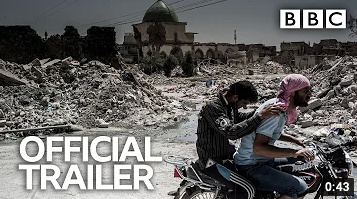🇮🇶 15 Years On: The Death of Saddam Hussein
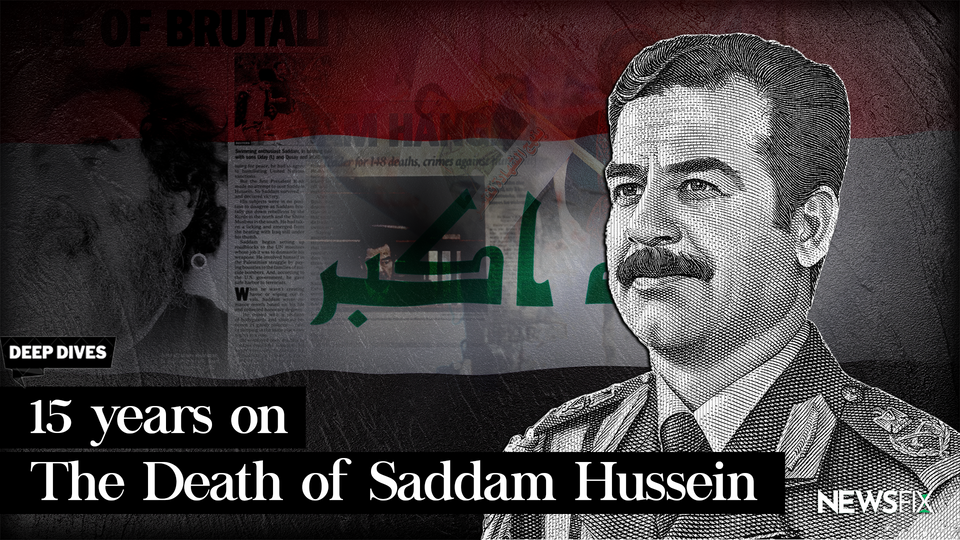
Morning all,
Tomorrow, December 30, marks 15 years since the death by hanging of Saddam Hussein.
It was a publicised and humiliating end for a polarising dictator, who had ruled Iraq under an umbrella of fear and brutality for nearly 24 years.
We have taken a look back at the events surrounding his execution, from American haste to hand him over, to the complex vacuum left in his wake.
Until tomorrow,
Your Fixers
A POST-9/11 WORLD
Following the attacks by Al Qaeda on September 11, 2001, President Bush alleged a link between the terrorist organisation and the leadership of Iraq.
A former member of the US National Security Council - who was in the White House the day after 9/11 - said President Bush was "obsessed" with Saddam Hussein, and "deliberately misled the American people" about who was responsible for the attacks.
Bush claimed Saddam Hussein could harbour terrorists, providing them with the infamous "weapons of mass destruction" - a claim that has since been widely discredited.
Saddam had allowed inspectors into Iraq - but refused to comply to the extent that the US demanded.
However, it was clear who many Americans believed. In a Washington Post poll in 2003, 69% of Americans said they believed Saddam was "personally involved" in the 9/11 attacks, while 82% believed he provided assistance to Osama bin Laden.
By 2006 - more than three years into the war - Bush acknowledged Saddam had nothing to do with 9/11, but doubled down on the "clear threat" his regime posed.

Back to 2003...
On March 17 2003, Bush warned Saddam he must step down or face war. Saddam refused, and on March 20 the US and its allies launched attacks on Iraq.
Speaking to Saddam's hold over the country in this period, just six months prior - in October 2002 - he was re-elected to another seven-year term in office. According to the Iraqi government at the time, Saddam was the most successful politician in the world - receiving a very suspicious 100% of the vote.
Initial US-led airstrikes targeted Saddam himself - making it clear eliminating him was a key objective for the allies. By April 9, the Iraqi capital of Baghdad fell, and Saddam went into hiding.
WHO WAS SADDAM HUSSEIN?
At the time, Saddam Hussein had been the leader of Iraq for more than 20 years, having become president in 1979. After coming into power, Saddam "brutally suppressed all domestic rivals".
He was a Sunni Muslim, born in Tikrit and raised by his mother, her second husband, and his maternal uncle.
While a significant majority of Muslims in Iraq (somewhere around two-thirds) are Shia, for decades Sunni Muslims had been in power.
Once supported by the US in Iraq's war against Iran (1980-1988), he fell out of favour with the western superpower once he invaded Iraq's small and oil-rich neighbour of Kuwait in August 1990, in a move that sparked the Gulf War.
During their strategic era of support for Saddam in the 1980s, the US were accused of refraining from addressing his "dreadful record of human rights abuses, his aggressive tendencies, and his political despotism".
Here is an excellent article on US/Iraqi relations throughout the decades.
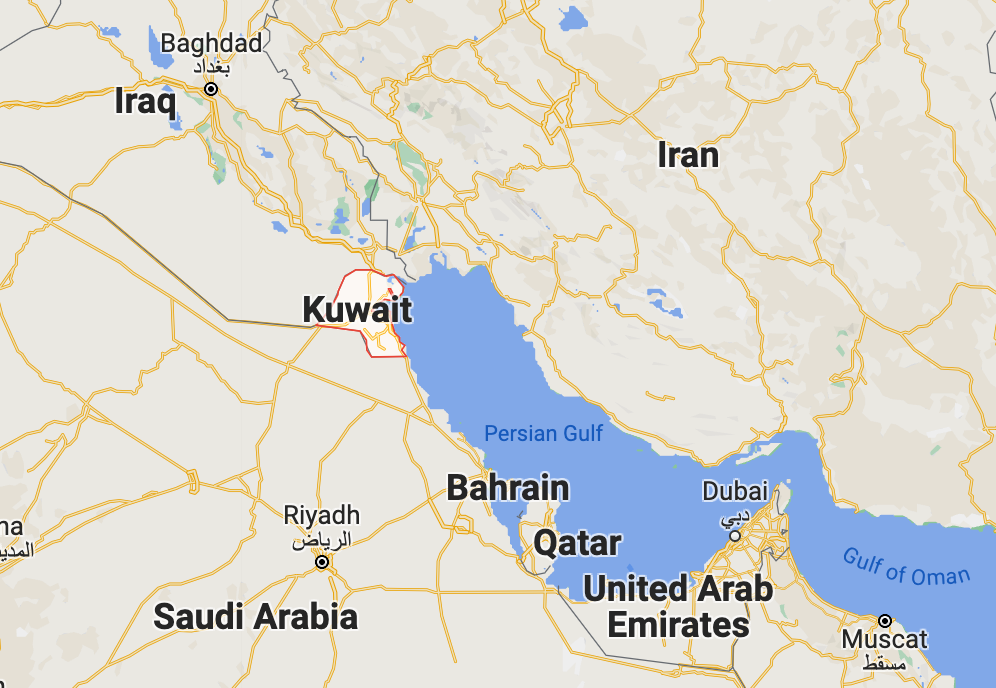
The US president at the time of the invasion of Kuwait was George H. W. Bush. During a speech to the nation announcing the beginning of the war, President Bush said "while the world waited, Saddam sought to add to the chemical arsenal he now possesses, an infinitely more dangerous weapon of mass destruction, a nuclear weapon".
Just 12 years later, President Bush's son followed in his footsteps as president, and using the premise of weapons of mass destruction the US invaded Iraq, and toppled Saddam's regime.
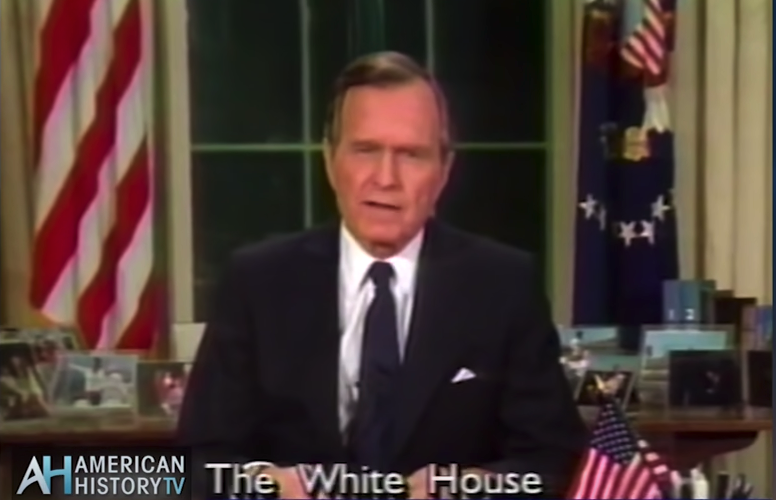
CAPTURING SADDAM
It was described as "one of the largest, most aggressive manhunts in history".
The US military devoted considerable resources to its pursuit of Saddam - and conducted at least 12 failed raids in the process.
Saddam's two sons - touted as potential successors - were cornered and killed by a US task force in Mosul, on July 22 2003. Meanwhile, Saddam was deep in hiding, evading US forces for nearly five more months.
On December 13 2003, the US - using intelligence obtained from a captured member of Saddam's security entourage - located and captured Saddam near his hometown of Tikrit.
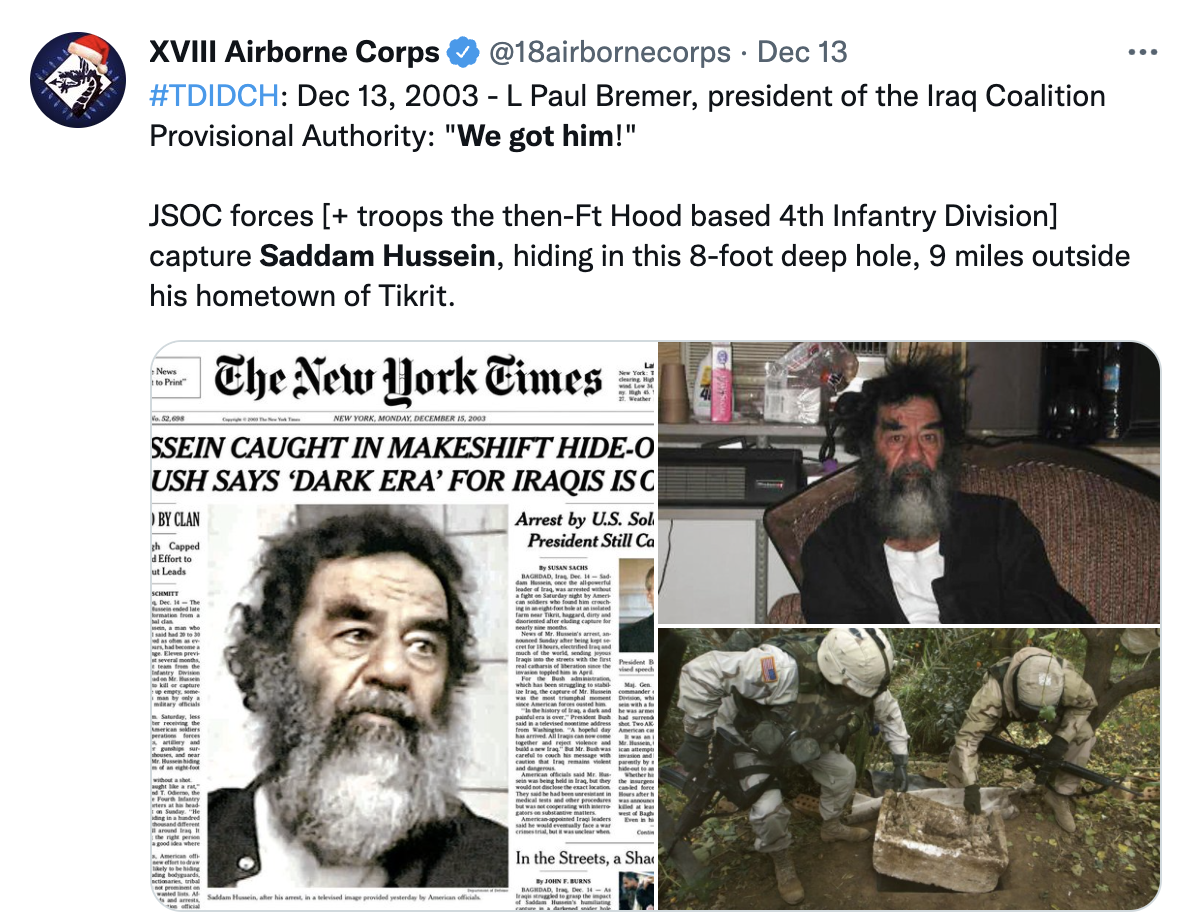
Nearly 600 US soldiers, plus tanks and helicopters, were used in the operation. Saddam - once a widely feared and to some, revered leader of Iraq - was found dishevelled and dirty in a hole in the ground on the site of a farmhouse.
He had a pistol strapped to his hip at the time, but did not fire a shot. Instead, according to a colonel at the scene, he said; "I am Saddam Hussein, President of Iraq - and I'm willing to negotiate." One of the soldiers is reported to have responded, "President Bush sends his regards".
Saddam's identity was confirmed by a bullet wound from a previous assassination attempt. He was given the nickname 'VIC' by US soldiers - 'very important criminal'.
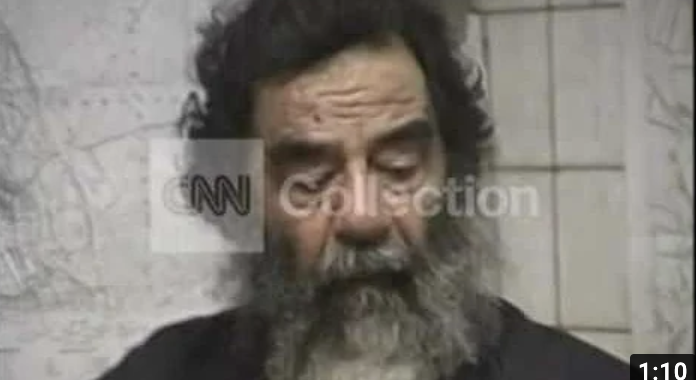
FADING HOPE
While some Iraqis remained steadfast in their support of Saddam, many millions rejoiced in his downfall and capture.
For a lot of the Shia population, many were hopeful seeing a Shia-led government ruling the country after decades of Sunni power.
However, elections in 2005 did little to realise hopes for democracy - instead exacerbating sectarian conflict. Dexter Filkin, who spent years covering Iraq for The New York Times, attributed the elections to the catalyst for civil war.
While few defend the record of Saddam or deny the brutal attacks he inflicted on his own people, many will also acknowledge the vacuum his toppling from power created. The chaos that unfolded in Iraq led to some people feeling nostalgia for Saddam's hold on power.
An Iraqi comedian, who was opposed to Saddam, told the BBC about a joke that was often told at the time;
"The Americans asked Saddam 'how much time do you need to make the situation in Iraq better?' He said, I will need one hour - 45 minutes to shave and change my clothes, and 15 minutes to say my speech on TV." - Ahmed Albasheer
ON TRIAL
In October 2005, almost two years after being captured, Saddam and key figures in his regime went on trial before the Iraqi High Tribunal. This was a court set up to try members of the former Iraqi government.
Saddam was accused of crimes including killing 148 people in Al-Dujayl, a majority Shia Muslim town, in 1982.
He was also accused of ordering the use of chemical weapons against the Kurdish town of Halabja in 1988, which killed around 5,000 people - mainly women and children.
A CNN cameraman once described the scene at Halabja as "most likely the worst thing I've seen in my career".
Here is a clip documenting the aftermath in Halabja, including the lifeless bodies of multiple innocent civilians. It makes for a graphic, distressing watch.
On a number of occasions during his trial, Saddam interrupted the judge - shouting that it was a sham and the US was behind it. Some cited Saddam's "stoic" presence in the courtroom, saying his outbursts gained him some popularity on the streets.
There were other, more serious disruptions to the trials too. Less than three weeks after it began, two of the lawyers representing defendants had been kidnapped and murdered. Another was injured in a drive by shooting.
There was also an instance of a judge being replaced after being accused of being too relaxed with Saddam and the other defendants.
Saddam's defence argued that the execution was all about revenge - a show trial orchestrated by the Iraqi government, with the help of the US and the British. This was heavily disputed by the Iraqi government - with its spokesperson emphasising the "whole execution is about justice".
On November 5 2006, Saddam was convicted of crimes against humanity - including wilful killing, illegal imprisonment, deportation and torture. He was sentenced to death.
As the judge read out his death sentence, Saddam broke into chant;
"Long live the people. Long live the nation. Down with the traitors, down with the invaders. God is great. To hell with you and the court." - Saddam Hussein to the judge
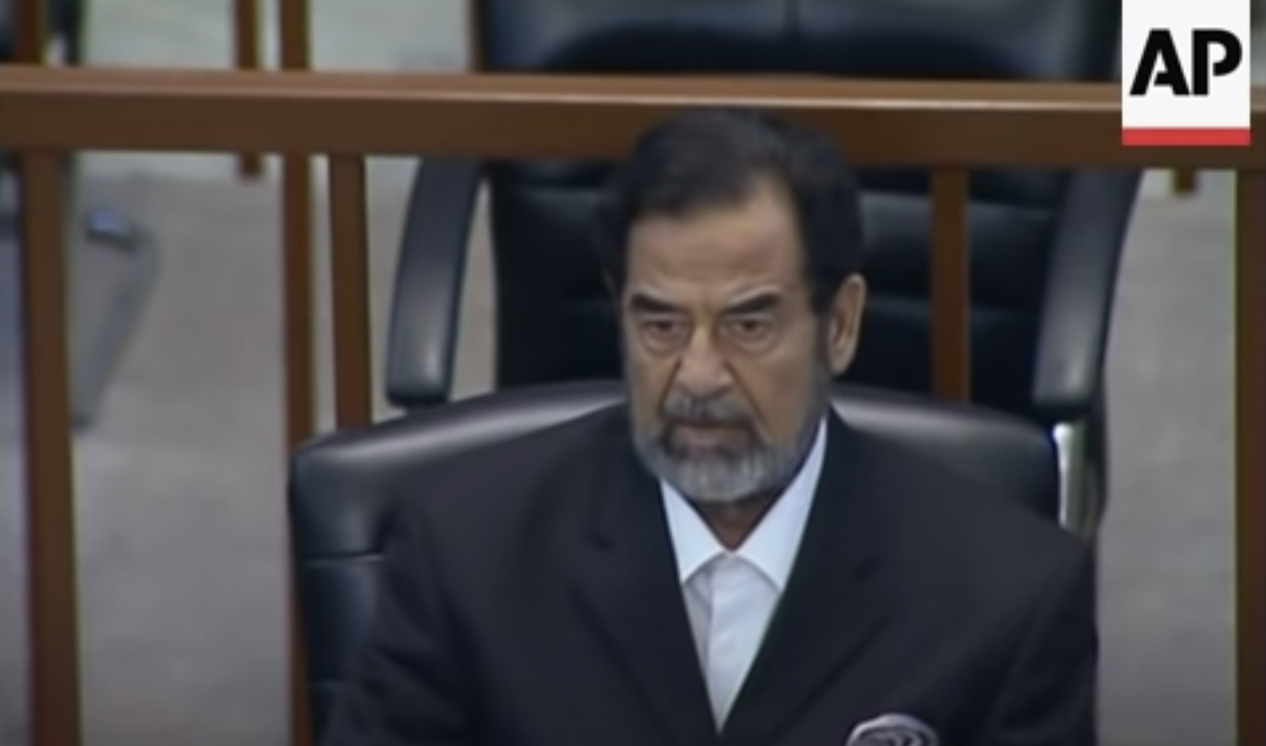
SADDAM'S FINAL DAYS
Following his conviction, Saddam spent his final days jailed inside a building that he built himself some years earlier. There he was permitted to attend to the garden - his "favourite area".
All in all, Saddam spent 1,110 days in solitary confinement.
During this time, Saddam wrote a variety of material - much of which appeared to be an attempt to record and cement his legacy.
"I find my responsibility in my role as a believer in the nation, requires putting the dots on the letters so that the people in history there after me know the facts, as they are - and not as those who want to counterfeit them." - Saddam Hussein's writings
In addition to recording aspects of his rule, Saddam wrote poetry. In one piece, written in Baghdad, he wrote;
"The nights are darker after sunset, but the smoke and the burning overwhelms the city - you will feel suffocated under its skies. My days are now nights - no stars and no moon, but lots of screams." - Saddam's poetry
On December 26 2006, Saddam's death sentence was upheld, and it was ruled he must be executed before January 27, 2007.
The ruling came three weeks into an appeal. At the time, The New York Times said "even prosecutors were stunned" with how swiftly the sentence was upheld.
AMERICAN PUSHBACK
Within days, there was a significant push from Iraq's Shia government - led by Nuri al-Maliki - to have the execution carried out. John Nixon, a CIA interrogator of the former dictator, said the Iraqi government "couldn't get rid of Saddam fast enough".
From 2004 onwards, the Iraqi government had legal control over Saddam. However, for security reasons he remained in the physical custody of the US.
Towards the end of December 2006, both the US Ambassador to Iraq and his deputy were out of the country due to the Christmas holidays.
The acting ambassador, Margaret Scobey, was allegedly given instructions "not to sign anything that would give a green light for execution". According to Nixon, Scobey allegedly "buckled under pressure from the military".
"This is how some of the momentous occasions in history take place: not with great deliberation and forethought, but by chance and circumstance". - John Nixon
The Americans had called for a delay to the execution of Saddam - citing sensitivities around the timing. The planned execution coincided with the beginning of the Islamic holiday, Eid al-Adha.
There had been a "Hussein-era law forbidding executions during religious holidays". The new Shia government argued the ban was not continued under their rule.
Eid al-Adha was to begin at sunrise on Saturday - in Baghdad that was at 7:06am.
"Iraqi government officials 'had promised the hanging would be over before the dawn light began seeping through the palms that shade the capital's streets'". - The New York Times, 2007
Saddam was hanged at 6:10am that morning, in what was described as an execution "fraught with legal ambiguities and Islamic religious sensitivities".
THE EXECUTION
“We had come to Iraq saying that we would make things better. We would bring democracy and the rule of law. No longer would people be awakened by a threatening knock on the door. And here we were, allowing Saddam to be hanged in the middle of the night.” - CIA interrogator, John Nixon
At 3:55am on December 30 2006, Saddam Hussein was woken up by US soldiers.
According to multiple reports, he knew he was being taken to be executed, and thanked the US guards and medics for the treatment he received as he left.
At 5:30am, the Americans handed Saddam over.
Footage of the execution showed Saddam being led into a room by three masked guards. It then showed the noose being tightened around his neck - with Saddam refusing to wear a hood. The broadcast stopped short of showing the actual execution.
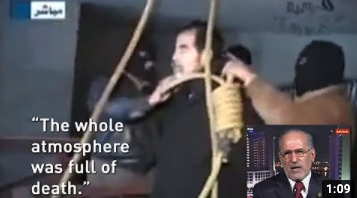
Following the hanging, the Al-Iraqia network showed images of Saddam's body - lying on a stretcher, covered in a white shroud, with his neck "twisted at a sharp angle".
A former Iraqi national security advisor described the atmosphere as "full of death," and a "very, very unpleasant experience".
Grainy mobile footage of the execution circulated soon after. It showed Saddam arguing with and being taunted by Shia hangmen and witnesses. Some shouted "go to hell," to which Saddam replied "the hell that is Iraq?" Others chanted the name of a radical Shia Muslim cleric, Muqtada al-Sadr.
The graphic footage also highlighted what many Sunni Iraqis perceived as a further insult - in the middle of one of "the most sacred of Muslim prayers" the trapdoor was released.
As Dexter Filkin from The New York Times stated, the hanging of Saddam "was so ghastly that it achieved the kind of remarkable effect of turning that monster into, in many people's eyes, a martyr".
WESTERN MEDIA COVERAGE
How to cover the execution of Saddam proved challenging for western media networks - while nobody disputed the historical significance of the event, it was the top story around the world at a time when children were at home on Christmas holidays.
The BBC decided to broadcast the footage on its breakfast programme, but on a time delay so it could cut if deemed too graphic, Indeed, it decided to cut away before the noose was placed around Saddam's neck.
However, for its evening bulletin the clip from Al-Iraqia - which did not show the actual hanging - was shown in its entirety.
Days after the execution, Sky News broadcast the images captured on the mobile phone during the day - without providing warning prior to the broadcast.
The UK media regulator, Ofcom, received 70 complaints in total about the footage broadcast on a number of channels, but primarily on the BBC and Sky News.
The regulator ultimately found that both networks had provided "appropriate information" prior to the images being shown - and noted they did not show the hanging itself.
INTERNATIONAL REACTION
Despite widespread condemnation of Saddam Hussein's dictatorship, there was a mixed and cautious reaction among western leaders to his execution.
Much of the carefully worded statements reflected the stance among many international leaders against the use of the death penalty in their own countries.
However, just 90 minutes after the execution, a statement from President Bush gave the impression the US approved, congratulating the Iraqi people for conducting a "fair trial".
"Fair trials were unimaginable under Saddam Hussein's tyrannical rule. It is a testament to the Iraqi people's resolve to move forward after decades of oppression that, despite his terrible crimes against his own people, Saddam Hussein received a fair trial." - President Bush in 2006

British Prime Minister Tony Blair - whose complex legacy is deeply tied to his support of the Iraq War - stayed silent for eleven days after the execution.
Eventually, he broke his silence, saying "the manner of the execution of Saddam was completely wrong... but that should not blind us to the crimes he committed against his own people".
"So the crimes that Saddam committed does not excuse the manner of his execution but the manner of his execution does not excuse the crimes." - Tony Blair, January 2007
Ireland's Taoiseach at the time, Bertie Ahern, made clear he was opposed to the death penalty in all circumstances - much like many of its European partners. Ahern stated at the time that Saddam "should have been jailed for the rest of his life".
One government which stood out for its entirely different reaction was that of Colonel Gaddafi, in Libya. His government announced a national three-day mourning period, stating "all celebration all around the country should also be cancelled".
It goes without saying Saddam Hussein was a brutal ruler who inflicted unthinkable violence on his own people.
At the time of his hanging, the UNHCR estimated one in eight Iraqis were displaced. For many innocent civilians, the suffering continued long beyond the end of Saddam's rule.
"The invasion of Iraq contributed to the destabilisation of several countries, the growth of violent Islamist ideology, and eventually the creation of a vast lawless space from which violence was projected in all directions." - Tim Marshall
RECOMMENDATIONS
While there is so much to explore and read about Saddam Hussein, Iraq, the US invasion, below are some of our top recommendations. We hope you find them helpful.
- A Century of US Relations with Iraq
- In Days Before Hanging, a Push for Revenge and a Push Back From the US
- Once Upon A Time in Iraq - a fascinating five-part series on BBC iPlayer
